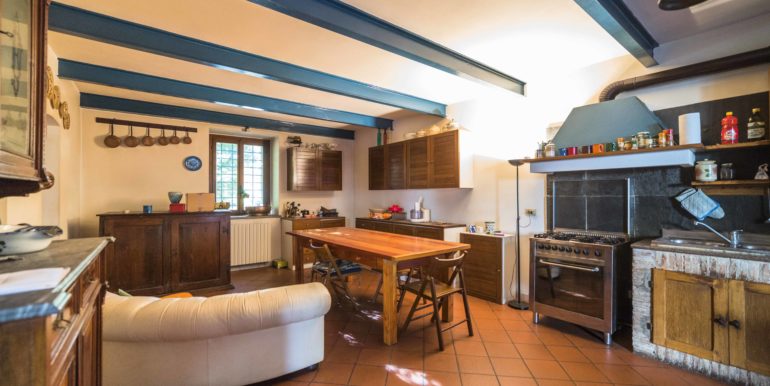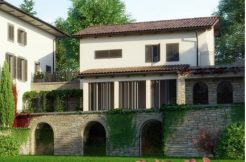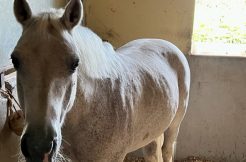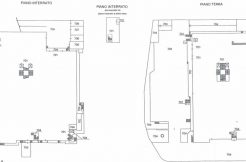Property ID : 10013
Sale 790.000€ - farmhouse, Holiday House, Rustic / Farmhouse, Two-family villa
Portion of a farmhouse in Brembate Sopra
In the central area within walking distance of services and shopping centers portion of partially renovated farmhouse of about sq.m. 600, so divided: small unit of about sq.m. 115 entrance, living room, kitchen and upper part large terrace, bedroom, bathroom.
The main unit is distributed as follows: ground floor, large eat-in kitchen with fireplace, living room, day bathroom, laundry room and large hobby room, the large rooms open to the inner garden courtyard, second floor consisting of 4 bedrooms with 3 bathrooms and third floor a large living room with terrace. The portion of the farmhouse is renovated, to be partially revised interior.
Indoor parking for 4/5 cars owned and courtyard of about sq. 800 sq. meters.
The request is € 790,000
Portion Cascina in Bonate Sopra.
ref. 10013 – Portion of farmhouse in Brembate Sopra- in the central area a few steps from services and shopping centers portion of farmhouse partially renovated of about sqm. 600, divided as follows: small unit of about 115 square meters entrance, living room, kitchen and top large terrace, bedroom, bathroom.
The main unit is distributed: ground floor, large kitchen with fireplace, living room, bathroom, laundry room and large hobby room, the large rooms open to the courtyard of the internal garden, first floor consists of 4 bedrooms with 3 bathrooms and third floor a large living room with terrace. The portion of the farmhouse has been renovated, to partially review the interior.
Internal parking for 4/5 cars owned and yard of approx. 800.
The request is € 790,000.
Information on Bergamasque farmsteads
Initially, the peasant dwelling was born as a single block that fulfilled in itself all functions, both residence and shelter for livestock, separate but not yet completely removed from the living quarters. The first step toward space specialization is precisely the separation of the barn from the residential rooms, although the physical warmth of the animals and their direct control to prevent theft initially suggested placing the stalls at the side of the rooms.
Only when the farm increased in size, and consequently also the number of livestock, did it become essential to move the stables away, although not excessively so as to still be controllable from the dwelling. Thus, stables were usually located rather far from the farm entrances and closer to the farmer’s home. The barns, on the other hand, were moved away from the dwellings to avert possible fire hazards, placing them above the stables and to the side of the warehouses and storerooms, which, however, had dedicated spaces only in the larger farms, while in the smaller ones they were initially located inside the residential building to be better controlled and avert possible theft.
From the cartography of the Teresian Cadastre it can be seen that originally “the farmer’s house” had no functional specializations but rather a compact structure, partly because the number of livestock was still rather small in the eighteenth century, used mainly for self-consumption, as well as the available perches of land appeared related to the daily work possibility of the tenant.
The principle of the country house is to contain, arrange and store the products of the field harvest. The kitchen, on the other hand, was always located at the entrance to the dwelling, on the ground floor, in direct contact with the outside, albeit protected by a shed or porch, or on the second floor.
In contrast, in single-story buildings the kitchen was next to the bedroom, with the stables located in a second building outside.
When, on the other hand, the building was multi-story, two possibilities became: the kitchen on the ground floor together with the stable and storerooms, or the kitchen on the upper floor with the rooms, barn and storehouse. The kitchen room was often the only entrance to the other rooms on that floor of the dwelling, and it was the transition point around which all the other rooms revolved; the workspaces, on the other hand, had independent entrances because the structure of the peasant dwelling was very centralized, due to the need to always control the progress of the family community. Another element of the rustic dwelling is the staircase, which can be internal or external to the building: if external, it is placed on or near the façade and can lead to a service gallery or to the loggia from which one accesses the kitchen or, if this is on the ground floor, to the various bedrooms arranged longitudinally with respect to the loggia and the gallery.
What distinguishes the various farmsteads then comes through the type of distribution of buildings around the courtyard itself, and we can therefore divide farmsteads into buildings:
- A closed court and that is when the buildings go to form a generally square complex;
2. Open court, and that is when buildings go to form a complex open on one side;
3. Open court ” L”-shaped when buildings go to form a complex open on two sides;
4. Irregularly planted or with separate buildings where a proper court may also be lacking;
5. One-piece or single-body.



















